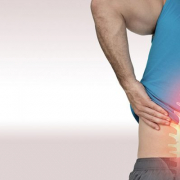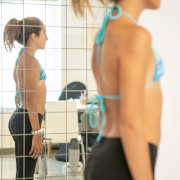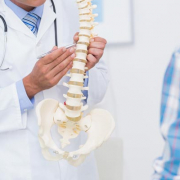Isico: our research on the roof of the world
ISICO specialists, starting with Prof. Stefano Negrini, scientific director, and Michele Romano, physiotherapy director, are at the top of the world’s research rankings with research on SEAS – Scientific Exercise Approach to Scoliosis, and the revolutionary Sforzesco brace, which has proven its efficacy in replacing plaster casts in the treatment of scoliosis.
The data from three studies (Global research hotspots and trends in non-surgical treatment of adolescent idiopathic scoliosis over the past three decades: a bibliometric and visualization study, Exercise therapy for adolescent idiopathic scoliosis rehabilitation: a bibliometric analysis, A bibliometric review and visual analysis orthotic treatment in adolescent idiopathic scoliosis from the Web of Science database and CiteSpace software) says so.
These studies have just been published and are the first to map the scientific knowledge of research on scoliosis conservative treatment using visual research techniques by examining its hotspots, frontiers, and evolutionary trajectories, aiming to give an in-depth overview of the research status and developments in this subject, serving as a reference for researchers.
Alan Pritchard introduced the scientific approach known as bibliometrics in 1969, monitoring data relevance and projecting future limits are aided by it. Researchers may comprehend the breadth of pertinent studies and efficiently promote information integration with the help of bibliometric analysis and its visualisation.
“These are the first three bibliometric analyses and visual analyses of orthotic treatment in adolescent idiopathic scoliosis that were taken into account from 1990 to 2023. In total, over a thousand articles and a total of 1005 records were included,” explains Prof. Stefano Negrini. “In Isico, we have 283 publications indexed in the last twenty years; 71 have dealt with scoliosis and braces and 37 with our SEAS approach. Numbers that, together with these recent bibliometric analyses, photograph the commitment and quality of years of constant and constantly growing scientific research”.
Scoliosis and conservative treatment: what we know
Adolescent idiopathic scoliosis (AIS) is a three-dimensional spinal deformity that develops in teenagers for unexplained causes. The guidelines of the International Scientific Society on Scoliosis Orthopaedic and Rehabilitation Treatment (SOSORT), are presently the treatment recommendations and the basis for available treatment choices.
For children with a Cobb angle between 26° to 45°AIS, bracing is the suggested nonoperative treatment option; for those with Cobb angles larger than 40° to 45°, surgery is advised. On the other hand, some parents and children with AIS insist on wearing a brace instead of having surgery performed. According to recently published meta-analyses, bracing can also reverse the progression of scoliosis curves from 40° to 60°.
Nevertheless, no bibliometric investigation has yet been done in this area.
Top of the class
1) The countries
China and Turkey are the only two of the ten countries with the greatest publishing output, categorised as developing; the other eight are categorised as developed. With 1,261 citations, the USA’s study was the most referenced, followed by China (977) and Italy (576).
The United States of America has the greatest annual publication volume, the longest length of research in this field, and the earliest start. China has the second-largest yearly publication volume, with a late start but quick development. It has grown remarkably every year, particularly in the last few years, and currently holds the record for the nation’s highest proportion of yearly publications.
Both are followed by Canada and immediately after by Italy, which comes in fourth place with 47 published articles.
2) The researchers/ High-impact authors
According to the study Global research hotspots and trends in non-surgical treatment of adolescent idiopathic scoliosis over the past three decades: a bibliometric and visualisation study, of the 3,472 authors included in the visualisation atlas, 15 have published more than 10 articles. And here, too, Italy with Isico is among the top five in the world: three positions are occupied by Canadian authors, one by a Chinese author, and the fifth by Prof. Stefano Negrini, scientific director of our institute, for the number of articles published. In the classification, in the tenth place in the world, we also find Dr. Fabio Zaina, a physiatry specialist at Isico.
Prof. Stefano Negrini is in first place regarding the frequency of citations.
The new SOSORT 2016 guidelines, published by Prof. Stefano Negrini et al. in 2018, had the highest burst intensity among the 25 burst citations with the most co-cited literature, according to an evaluation of the Web of Science database. It focused on the background of idiopathic scoliosis, described conservative treatments for various populations, provided flow charts for clinical practice, reviewed the literature, and made recommendations regarding bracing, PSSE, assessment, and other conservative treatments.
It should be noted that Prof. Negrini is also in seventh place with the 2011 SOSORT guidelines: orthopaedic and rehabilitation treatment of idiopathic scoliosis during growth.
Instead, the study Exercise therapy for adolescent idiopathic scoliosis rehabilitation takes into consideration the top 10 active authors who have published literature on exercise therapy for AIS rehabilitation, and here Isico is on the roof of the world: Prof. Stefano Negrini is in the first place, followed by our physiotherapy director Michele Romano, while in the fourth and fifth places, we find Dr. Fabio Zaina and physiotherapist Alessandra Negrini.
The authors of this latest research write: “With 287 citations overall and an average of 47 citations per manuscript, it shows that the Italian Scientific Spine Institute is placed top in terms of citations per paper. Furthermore, the H-index could fairly represent the author’s academic accomplishments. With the highest ranking on the H-Index, Negrini Stefano is the most influential person in this sector. 172 publications have been published thanks to the efforts of this group of authors, with Negrini Stefano taking the lead. The team focuses on rehabilitating idiopathic scoliosis during growth, particularly through treatment with specific exercises”.




